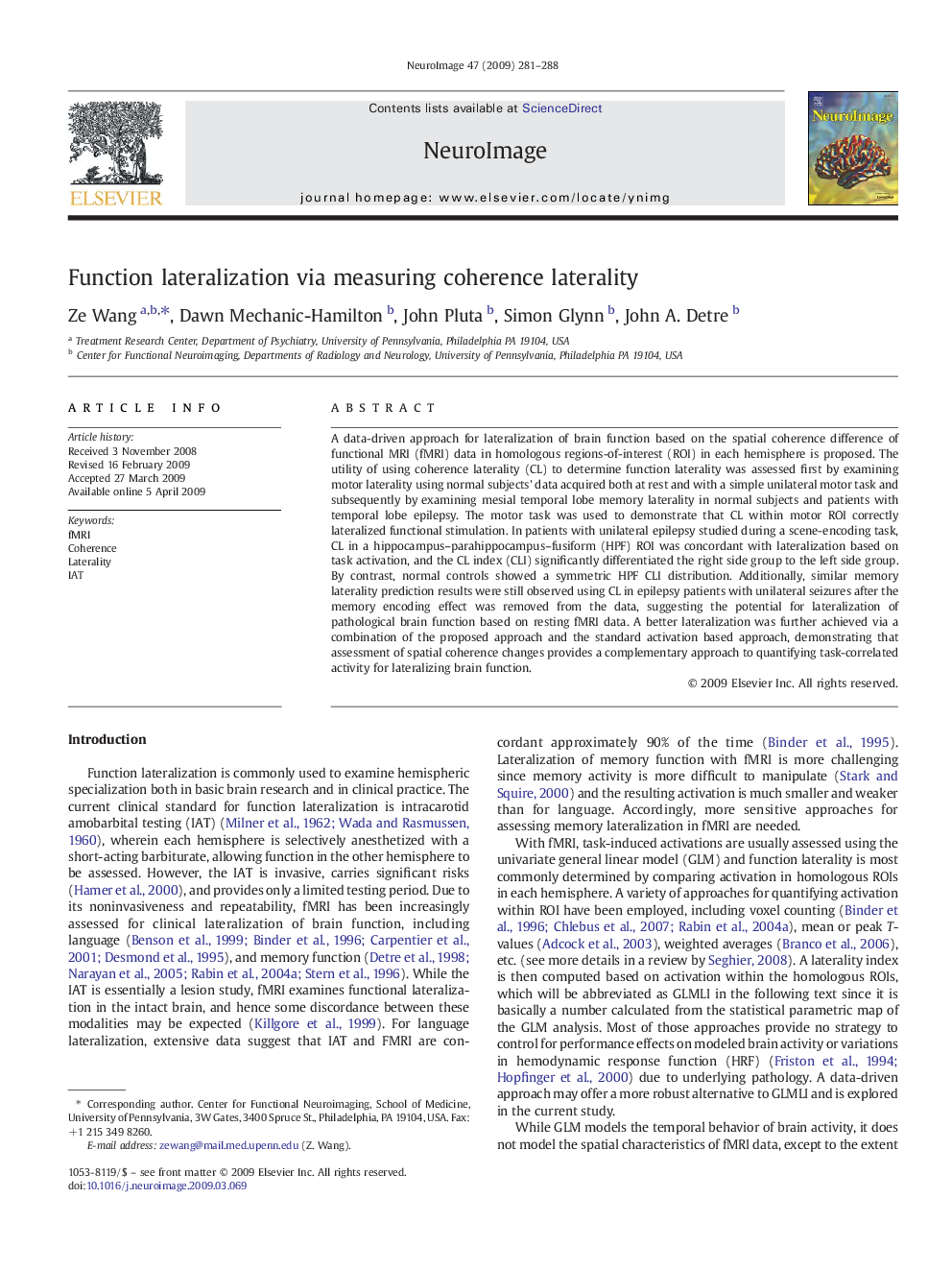| Article ID | Journal | Published Year | Pages | File Type |
|---|---|---|---|---|
| 6036845 | NeuroImage | 2009 | 8 Pages |
A data-driven approach for lateralization of brain function based on the spatial coherence difference of functional MRI (fMRI) data in homologous regions-of-interest (ROI) in each hemisphere is proposed. The utility of using coherence laterality (CL) to determine function laterality was assessed first by examining motor laterality using normal subjects' data acquired both at rest and with a simple unilateral motor task and subsequently by examining mesial temporal lobe memory laterality in normal subjects and patients with temporal lobe epilepsy. The motor task was used to demonstrate that CL within motor ROI correctly lateralized functional stimulation. In patients with unilateral epilepsy studied during a scene-encoding task, CL in a hippocampus-parahippocampus-fusiform (HPF) ROI was concordant with lateralization based on task activation, and the CL index (CLI) significantly differentiated the right side group to the left side group. By contrast, normal controls showed a symmetric HPF CLI distribution. Additionally, similar memory laterality prediction results were still observed using CL in epilepsy patients with unilateral seizures after the memory encoding effect was removed from the data, suggesting the potential for lateralization of pathological brain function based on resting fMRI data. A better lateralization was further achieved via a combination of the proposed approach and the standard activation based approach, demonstrating that assessment of spatial coherence changes provides a complementary approach to quantifying task-correlated activity for lateralizing brain function.
